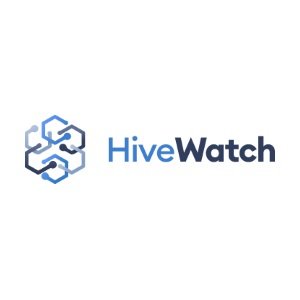HiveWatch - Experts & Thought Leaders
Latest HiveWatch news & announcements
HiveWatch, a physical security software company reimagining how organisations keep their people and assets safe, announced a breakthrough in enterprise security operations using Anthropic’s Claude AI technology to transform traditional security monitoring from reactive alert processing into strategic intelligence operations. The new HiveWatch® AI Operator uses Claude’s advanced language understanding and reasoning capabilities to intelligently filter and contextualise security alerts, dramatically reducing false alarms while spotting complex threats. AI Operator AI Operator is customisable based on existing SOPs and is able to acknowledge, analyse, escalate The AI Operator is customisable based on existing Standard Operating Procedures (SOPs) and is able to acknowledge, analyse, escalate, and respond to alarms in real-time. It does this while maintaining meticulous incident records, reducing the opportunity for human error. "Physical security teams protect some of our most valuable assets, yet they're drowning in data and false alarms," said Ryan Schonfeld, Co-Founder & CEO, HiveWatch. Physical security teams Schonfeld added: "By collaborating with Anthropic to deliver the AI Operator to our initial Fortune 500 customer base, we're not just adding AI to existing systems – we're fundamentally reimagining how companies protect their people and assets in an increasingly complex threat landscape." Physical security teams manage over $300 billion in annual security spending, yet face a critical challenge: operators spend most of their time processing alerts, many of which are false alarms, leaving minimal capacity for strategic security work. Impactful and preventative initiatives The HiveWatch AI Operator is a force multiplier that reduces operator turnover, missed incidents The HiveWatch AI Operator is a force multiplier that reduces operator turnover, missed incidents, and cost, ultimately allowing the team to focus on more impactful and preventative initiatives to reduce risk for the business and keep assets and people safe. "Claude's ability to understand complex security protocols, reason about multiple data streams, and explain its decisions makes it uniquely suited for security operations," said Jamie Neuwirth, Head of Startups at Anthropic. HiveWatch's platform Neuwirth added: "Through HiveWatch's platform, Claude works alongside security teams, augmenting their expertise by rapidly processing alerts and providing contextual insights that help professionals make better-informed decisions." "When security teams and AI work together this way, professionals can focus their expertise on strategic threat analysis and critical response planning, while maintaining full visibility into the AI's decision-making process." Early adopters among fortune 500 enterprises The union marks a pivotal moment in updating an industry that has stayed largely unchanged The collaboration marks a pivotal moment in modernising an industry that has remained largely unchanged as it releases to an initial group of Fortune 500 enterprises ready to revolutionise physical security through advanced AI integration. Initial early customers include a $300 billion public technology company, a $200 billion life sciences company, a $150 billion marketplace, a $30 billion Fortune 500 retailer, a $30 billion public gaming company, and a healthcare system – all of whom have requested to remain anonymous because of security implications. Strategic security analysts "HiveWatch stands apart with their enterprise-scale security platform," said the confidential $300B public technology company’s Chief Security Officer. "We anticipate their AI Operator will transform how we approach security operations, enabling our team of operators to evolve into strategic security analysts while strengthening our entire global security program." The HiveWatch AI Operator will be available to enterprise customers starting in January 2025. Early access programs have already begun with select Fortune 500 companies across the financial services, technology, healthcare, retail, and life sciences sectors.
Verkada, the pioneer in cloud-based physical security announced that it has added six new technology partners to its Integrations programme: Appriss Retail, Auror, Axon Evidence, CompScience, Extreme Networks, and RedBag. This expanded range of supported integrations will empower Verkada customers across a range of verticals, including retail, law enforcement, manufacturing, and education, to address even more use cases with Verkada's platform and solutions. Verkada's Integrations programme "Verkada's supported integrations are making it even easier for our customers to leverage Verkada's powerful platform," said Brandon Davito, Senior Vice President of Product and Operations. He adds, "As we continue to add more trusted technology partners to Verkada's Integrations programme with deep expertise in verticals, we'll continue to unlock even more value for our more than 28,000 customers globally and across even more complex environments and use cases." Six new technology partners With Appriss Retail, a loss prevention and return management solution, retail customers can seamlessly pair their Verkada cameras with Appriss Retail's operational analytics to quickly identify and review suspicious transactions. With Auror, a retail crime intelligence solution, customers can easily export video archives from Verkada Command into Auror. By consolidating footage and reports through Auror, retailers, and law enforcement can more effectively collaborate to identify repeat offenders, trends, and organised retail crime networks. With Axon Evidence, customers can seamlessly export video archives from Verkada Command into Axon Evidence, Axon's cloud-based digital evidence management platform, simplifying and streamlining workflows for law enforcement and public safety agencies. Axon Evidence is designed to securely store, manage, and share critical video and multimedia evidence collected from body cameras, drones, and other devices, ensuring efficient collaboration and compliance with legal standards. With CompScience, a safety-driven analytics solution, customers can combine Verkada's high-quality video with CompScience's safety analytics to analyse work environments and identify potential safety hazards – ultimately enhancing operational efficiency, safety, and security in high-liability work environments. With Extreme Networks, a cloud-based network infrastructure and management solution, customers can provision Verkada cameras in a secure, multicast-enabled segment using a zero-touch setup to automatically apply networking policy rules. With Redbag, a silent communications tool that provides broadcast and two-way communication between the classroom and emergency responders, customers can connect their Verkada devices to RedBag's dashboards to enhance situational awareness during lockdown events and provide video access to first responders during a crisis. These new technology partners join 12 existing members including Fūsus, HiveWatch, SingleWire Software, and Sureview.
HiveWatch, a physical security software company reimagining how organisations keep their people and assets safe, has partnered with Genea, a smart building technology provider specialising in cloud-based security built on non-proprietary hardware. The partnership allows HiveWatch® GSOC Operating System (OS) customers to leverage the innovative solutions from Genea to strengthen their security posture across their organisations. Security management platform “The collaboration between Genea and HiveWatch allows security professionals to level up their security with expansive oversight and data-driven decision-making,” said Mike Maxsenti, General Manager of Security, Genea. “HiveWatch has proven to be a pioneer in thinking differently about security functionality, and we’re excited to incorporate the option to expand customer relationships using its security management platform.” HiveWatch® GSOC OS Customers can connect Genea devices alongside other disparate access control and camera systems Genea offers a cloud-based access control and visitor management platform built on non-proprietary hardware that empowers users with the ability to monitor their buildings and provision credentials from anywhere. When coupled with the HiveWatch® GSOC OS, customers can connect Genea devices alongside other disparate access control and camera systems, creating a single view and platform for GSOC operators to work from. Data-driven insights “Genea’s open API technology gives users the ability to not only seamlessly add their innovative Mercury-based access control to a security program, but provides more options to companies that may not have the ability to rip-and-replace at scale,” said Ryan Schonfeld, Co-Founder & CEO, HiveWatch. “The partnership with Genea adds another tool for pioneers to level up their security programs and ensure GSOC operations are viewed as more than a ‘cost centre,’ but as a way to provide organisations with data-driven insights and more value that drives the entire business forward, regardless how many systems they use today.” Genea and HiveWatch will discuss how security strategy is impacted by disparate systems in an upcoming webinar, “How to Solve the Disparate Systems Challenge,” at 10 a.m. PT on Monday, October 21.
Insights & Opinions from thought leaders at HiveWatch
In the physical security marketplace, artificial intelligence (AI) has evolved beyond the novelty phase. The emphasis has now shifted to the more practical aspects of implementing AI technology. That a system implements AI is no longer impressive in and of itself. The question becomes: What can this AI system do for me? How can it improve my physical security stance? We asked our Expert Panel Roundtable: How is artificial intelligence (AI) transforming physical security?
From where I sit in talking to security pioneers every day, the traditional Global Security Operations Centre (GSOC) stands at a critical inflection point. Security teams are up against challenges in staffing, operational efficiency, and more threat complexity, which means “thinking outside the box” is becoming critical. The use of artificial intelligence (AI) is emerging as more than a buzzword in these situations; it’s becoming a game-changing force multiplier in security operations. Reaching a breaking point Today's GSOCs face a perfect storm of operational challenges. Security operators, typically earning between $20-40 per hour, require extensive training periods lasting weeks or months as a result of the numerous applications they’re tasked with using. Yet the industry grapples with insane turnover rates of 100-% to 300% annually, creating a costly cycle of continuous recruitment and training. Meanwhile, operators are drowning in video feeds and alarms, leading to fatigue, missed incidents, and delayed response times. Practical applications for AI The reality of many GSOCs, however, is a disjointed mess of multiple applications The GSOC is the centre of an organization’s security and in a perfect world, all of the data related to safety across multiple facilities flows through there, giving operators a clear picture of what’s going on at any given time. The reality of many GSOCs, however, is a disjointed mess of multiple applications. Think about all the platforms needed to respond to a single incident – access control alarm, video to verify, standard operating procedures (SOPs) stored on a shared drive, radios to get a hold of a guard to dispatch, finding a list of emergency numbers and corresponding it to where the incident is happening, and manually logging the results. Steps into a single platform Not only is there a case for unifying all of these steps into a single platform that pulls in data from various sources, but layering response with AI-enabled technology to achieve the following: Real-time video analysis and threat detection. AI-enabled systems are revolutionising surveillance operations by simultaneously monitoring multiple video feeds, detecting and classifying objects, people, and behaviours in real-time. The technology excels at identifying suspicious activities such as loitering, abandoned objects, or unauthorised access attempts, automatically alerting operators to potential threats – or even identifying false alarms that can take human operators away from the work they’re doing – all while maintaining vigilance across numerous camera feeds. Intelligent alarm management. One of AI's most immediate impacts is in addressing the chronic problem of false alarms. By analysing multiple data points simultaneously, AI technology can intelligently filter and verify alerts, dramatically reducing false positives that traditionally consume valuable operator time. An AI GSOC operator, for example, can assess an incoming alarm and either identify it as a real threat (then escalate to its human supervisors) or use SOPs to determine that the alarm is false, providing feedback and reasoning that’s collected and assessed. This intelligent triage ensures security teams focus on genuine threats rather than chasing false alarms, significantly improving response efficiency. Automated incident response. When security incidents occur, AI systems can instantly gather relevant data from multiple sources – including video feeds, access control logs, and sensor data – to generate preliminary incident reports and initiate appropriate response protocols. This automation ensures consistent application of security procedures while maintaining detailed documentation for compliance and analysis purposes. Predictive analytics and pattern recognition. By analysing historical data, AI systems can identify patterns that might indicate emerging security risks before they materialise. This includes detecting unusual access patterns, anomalies in foot traffic, or behavioural patterns that suggest potential future security threats, enabling proactive rather than reactive security measures. The benefits to the business While AI can be used in so many ways to reduce false alarms, create more efficiencies, and help GSOC operators elevate their roles to be more strategic, there is still a stigma associated with its use. However, a lot of the conversations around this kind of investment can be elevated to reflect positively on the business, which can help achieve more buy-in from leadership. Here are some of the ways: Operational improvements: Dramatic reduction in false alarm rates through intelligent verification systems that analyse multiple data points simultaneously Response times cut significantly through automated triage and threat assessment protocols Standardised and consistent application of security protocols across all shifts and incidents More efficient resource allocation through AI-driven staffing recommendations based on historical patterns Expanded security coverage without proportional staffing increases, enabling monitoring of multiple locations simultaneously Enhanced incident documentation through automated report generation and data collection Improved situational awareness through real-time correlation of multiple data sources Reduced training time for new operators through AI-assisted guidance systems Better compliance management through automated protocol enforcement and documentation Business impact: Significant cost savings through reduced false alarm response and more efficient staffing Decreased liability exposure through comprehensive incident documentation and consistent protocol application Enhanced regulatory compliance through automated record-keeping and standardised procedures Improved risk management through predictive analytics and early warning capabilities Better return on investment for security technology through integrated AI-driven optimization Increased scalability of security operations without proportional cost increases More robust business continuity through improved threat detection and response Enhanced protection of critical assets through constant AI monitoring Personnel impact: Reduced operator burnout through automation of routine and repetitive tasks Enhanced job satisfaction as operators focus on strategic decision-making rather than routine monitoring Improved work-life balance through more efficient resource allocation New career development opportunities in AI-enabled security operations Better retention rates through reduced stress and increased job engagement Enhanced skill development as operators learn to work with advanced technology Improved team collaboration through AI-assisted information sharing More effective decision-making support through AI-driven insights Greater operator confidence through AI-backed verification of security events AI and the road ahead Integration of AI into the GSOC is about more than simply technological advancement While security historically hasn’t changed as quickly as its cyber counterparts, its evolution is imminent. Integration of AI into the GSOC is about more than simply technological advancement; it’s a seismic shift in how organisations approach security operations. The future of this is in the partnership between human expertise and AI capabilities, where technology handles routine monitoring and initial threat assessment, allowing security personnel to focus on complex decision-making and strategic security initiatives. Transformation of security operations For security pioneers looking to implement AI in their GSOCs, success lies in thoughtful integration that considers both technical requirements and human factors. By carefully balancing automation with human oversight, organisations can create more effective, efficient, and responsive security operations that deliver tangible value to the enterprise. The transformation of security operations through AI isn't just about doing more with less – it's about doing better with what we have. As threats become more sophisticated and security demands continue to grow, AI-enabled GSOCs will be better positioned to meet these challenges while delivering enhanced protection for people, assets, and operations.
2025 is likely to see further advancements in artificial intelligence, with potential impacts on various aspects of society, including the security industry. The new year will also require security professionals to adapt to changing market conditions and develop contingency plans for unforeseen events. Industry changes will accelerate and challenge everyone in the security market to keep up. Making specific predictions for the new year can be a struggle, but we asked our Expert Panel Roundtable: What will be the big news for security in the year ahead?
Using artificial intelligence (AI) to automate physical security systems
DownloadA modern guide to data loss prevention
Download7 proven solutions for law enforcement key control and asset management
DownloadThe truth behind 9 mobile access myths
DownloadAccess control system planning phase 2
Download























